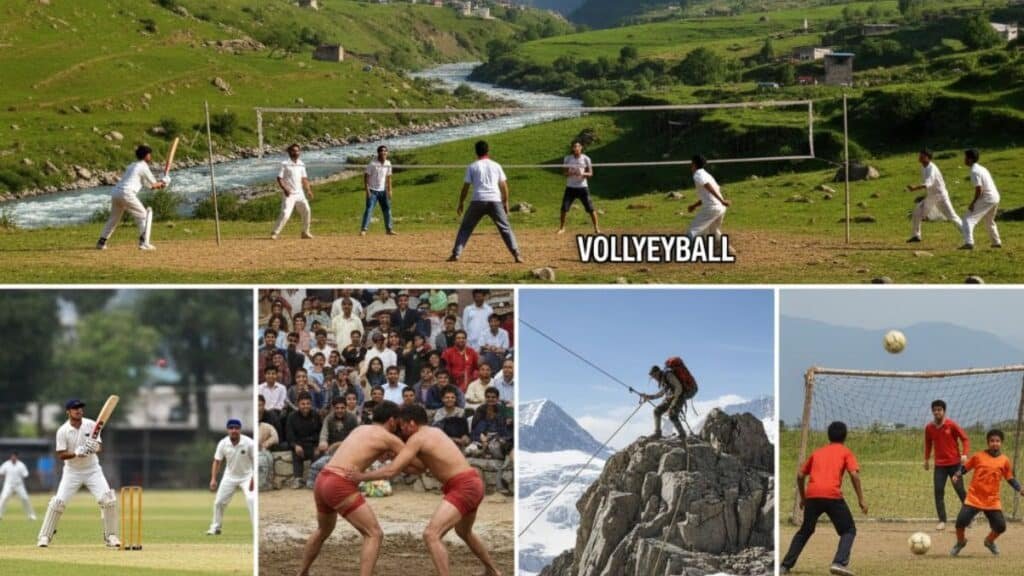MUZAFFARABAD: Azad Jammu and Kashmir, often called “Paradise on Earth,” is a genuine tourist destination of breathtaking mountains, valleys, and lakes in northern Pakistan but due to harsh winter weather, tourists often get into trouble. In this blog, we will tell you 7 ways to protect yourself from heavy snowfall in Azad Kashmir.
For an easy and delightful trip to Azad Kashmir, you should take certain precautions and be prepared to keep safe from freezing and packing snowy weather.
Here are the 7 ways to protect yourself from heavy snowfall in Azad Kashmir.
1. Stay Informed
Due to the unpredictable conditions of weather in the area one of the 7 ways to protect yourself from heavy snowfall in Azad Kashmir is to check the weather forecast and reports before traveling to Azad Kashmir.
Staying up to date with the weather forecast is important to ensure safe travel and to get an estimate of the duration and intensity of snowfall.
Such information will help you in planning activities and outdoor adventures such as hiking and skiing.
Additionally, this will help you navigate the best route possible for your travel as roads often get blocked due to heavy snow storms which can be deadly.
To check on the latest weather forecast you can follow local news channels or the official website of the Pakistan Meteorological Department (PMD), AccuWeather, and others.
2. Dress Warmly
Warming up is the key issue to defend oneself against the snow and cold. It is absolutely essential to put on as many clothes as you can before going into the snowy terrain, to prevent yourself from becoming hypothermic or frostbitten.
The first thing in dressing warmly is layering. This means wearing a combination of a warm coat, gloves, hat, and scarf that trap the warm air and keep it from the cold. Use layers of breathable and moisture-wicking fabric that can wick sweat away while keeping the wearer warmer.
A warm coat will be the outermost layer, with a fabric that is both waterproof and breathable. Such a coat prevents snow and rain from getting to the inner layers but allows moisture to escape and therefore condensation does not build up. Use warm insulation if possible.
It is also advisable to wear a pair of glove liners underneath the outer gloves, to provide some extra warmth. Other than gloves, hats and scarves are important to prevent heat loss from the head and neck area.
Hats should be warm and breathable, while scarves should be long enough to cover the neck and mouth.
When choosing the ideal clothing for your snow adventure, consider the fabric and the nature of the clothes you are packing up.
Wool, fleece, and synthetic fabrics are good insulators that keep you warm. Avoid kinds of cotton, they become heavy and cold when wet. Do consider the immediacy of the day’s weather.
3. Protective Gear
While going to the snow-bound country of Azad Kashmir, it becomes imperative to cover each of your face and eyes with protective gear to provide safety against the snow and the wind’s harsh effects.
The action of snow and wind may wreak havoc on your face and eyes, leaving you in the grips of snow blindness and windburn. Snow blindness is a debilitating condition caused by the brief, traumatic radiation on the surface of the eyes from lightning; in contrast, windburn results from prolonged exposure of the skin to elemental irritants such as wind.
To cover your face and protect your eyes from such inflictions, you should opt for protective gear such as goggles, sunglasses, and a face mask.
Sunglasses protect your eyes from the precipitation of snow and ice, and deep ultraviolet radiation; this time, those sunglasses are on some kind of lower priority.
The lens used should provide 100% UV protection and feature a wraparound design, minimizing sun- and wind-blown particles from affecting your eyes.
Another vital piece would be a face mask-the ideal equipment to protect your face from unfavorable winds and snow.
Loose-fitting fleece, wool, or a material that allows for breathability and moisture-wicking should cover your nose and mouth and turn cold air away. The snow and wind shall have no chance of burning your skin if you wear protective goggles, sunglasses, and a face mask anyway, letting you page through Azad Kashmir in all of its snowy glory.
4. Stay Indoors
One of the other important steps from the 7 ways to protect yourself from heavy snowfall in Azad Kashmir is traveling outdoors during heavy snowfall in Azad Kashmir is extremely risky and hence, not advisable.
Because during the snow storm, the level of visibility drops drastically, you may not be able to tell just how slippery the roads have gotten, which is extremely dangerous.
The chances of getting into an accident when it is snowing heavily increase significantly, and the aftermath could be truly devastating.
If you have to travel in emergency cases, make sure to prioritize finding a reliable mode of travel. Vehicles fitted with snow tires and an advanced traction control module can help to maneuver around the snow without skidding.
It is also important to have a vehicle with high ground clearance, like an SUV, so it can push through the thick layer of snow.
Before traveling, be sure to look at the weather forecast and plan your route accordingly. To avoid getting stuck in severe snowfall zones, try to travel at off-peak times.
Stay within the limits of main roads that are more likely to be kept clear. In case of an emergency, always make sure to inform people about your travel plans and estimated return time.
5. Keep Emergency Supplies
As you travel to Azad Kashmir during winter months, you may need to prepare an emergency kit to ensure your survival in case of any emergency and
They include stocking the house with food, water, and a first-aid kit or keeping such supplies in your car. These can save you from starving should you happen to be trapped somewhere once winter sets in or when one has no access to basic amenities.
Encourage your family members to stock the house with emergency supplies such as non-perishable food items, bottled water, and a first-aid kit. It is also a good move to have backups like a generator or flashlights at home in case of a power failure.
Another good idea would be to keep an emergency kit in your car in case of road trouble. For instance, such a kit could include items like blankets, flashlights, food, and first-aid kits. Spare tires, jack, and a set of jumper cables should be essential as well.
Being prepared and having an emergency kit can considerably reduce accidents and injuries and make the journey to Azad Kashmir safe and enjoyable. You should also ensure to keep emergency supplies for emergencies. First should be your safety and comfort, so always take proper precautions against the harsh winter.
6. Use Snow Chains
The sixth step from the 7 ways to protect yourself from heavy snowfall in Azad Kashmir is to use snow chains on your tires; it’s one of the most effective means of keeping you safe on the road. Snow chains provide greater grip and will lessen the chance of skidding, which is very dangerous indeed when you’re negotiating turns or coming to a stop on icy or snowy surfaces. Operative snow chains will practically remove the possibility of loss of control of the vehicle.
An imperative is the instruction and ability to install and use snow chains correctly, for otherwise, scant benefit, or, worse, an injury could result. Be sure to follow the manufacturer’s instructions and try out the installation of snow chains before you find yourself needing them.
Additionally, stay alert to speed limits and road conditions while using snow chains, for if you drive too fast or on unsuitable road surfaces, the chains might break or come loose.
7. Stay Visible
When walking or driving in heavy snowfall, there is absolutely nothing more important than creating a maximum amount of visibility for other driving people and pedestrians. A reduced ability to see is a guaranteed recipe for accidents; the important lesson some steps need to be taken to increase visibility.
An even simpler way would be bright reflective clothing: jackets, hats, and gloves equipped with reflective strips or being brightly colored and easily seen from a distance. While driving, use your headlights and taillights to make yourself visible. It is always better to be seen by other drivers before an accident happens in low-visibility conditions.
In conclusion, these 7 steps will protect you from harsh winter seasons and will protect you in cases of emergency.




